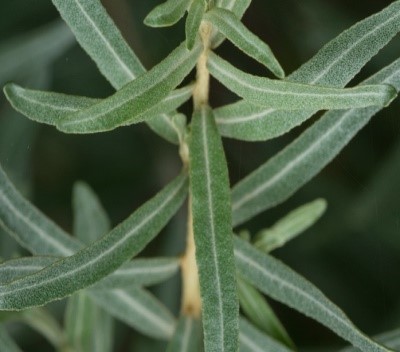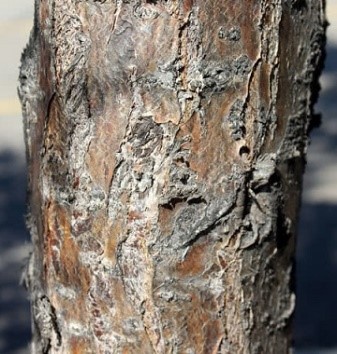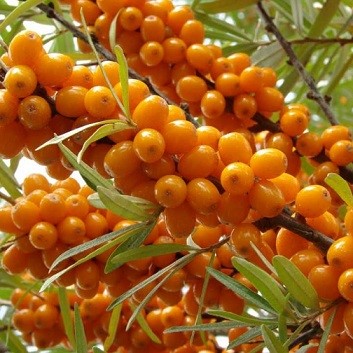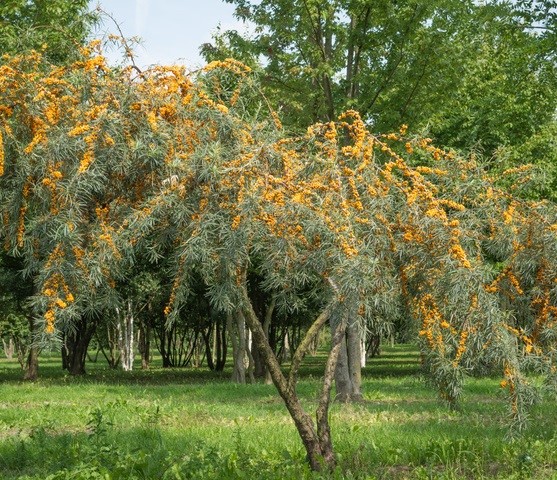Trees
Hippophae rhamnoides
Hippophae rhamnoides
Description :
This
plant is evergreen or deciduous shrub that can grow up to the height of 2 to 4
m high. It has a rough, brown or black bark and a thick, grayish-green crown.
The leaves of the plant are narrow, alternate. This plant is dioecious, which
means that the male and female flowers grow on different shrubs. The sex of
seedlings can only be determined at the first flowering, which mostly occurs
after 3 years. The male inflorescence is built up of 4 to 6 apetalous flowers,
while the female inflorescence normally consists of only one apetalous flower
and contains one ovary and one ovule. Fertilization occurs only by wind
pollination, so male plants need to be close to female plants to allow for
fertilization and fruit production. The fruits are oval or lightly roundish,
with varying from pale yellow to dark orange in color and they grow in compact
like grapefruit.
Distribution :
This plant is native to the regions of Europe
and central Asia, it can also be found in Tadzhikistan, Afghanistan, Mongolia,
and China and in the regions of Himalayas including Pakistan. It prefers to
grow in cold-temperate regions.
Uses :
It is a very versatile plant
and the fruits as well as the leaves can be used. The fruits are processed and
then used in the food industry. It is also used in the making of traditional
medicines and also in cosmetic industry. The leaves can be used as feed,
particularly for ruminants. The plant is also used as shelterbelt or for land
reclamation.
(Li & Schroeder, 1996)



